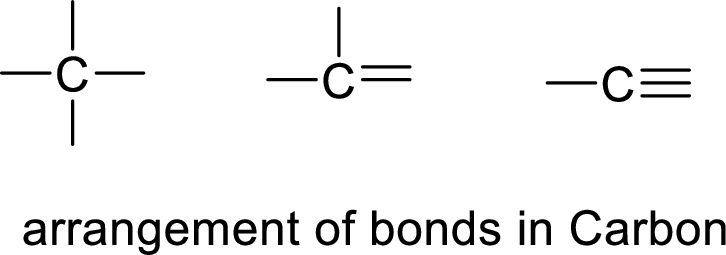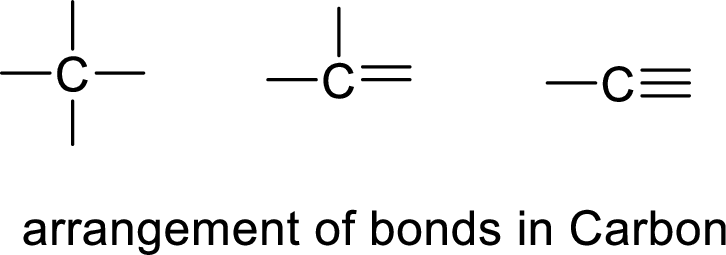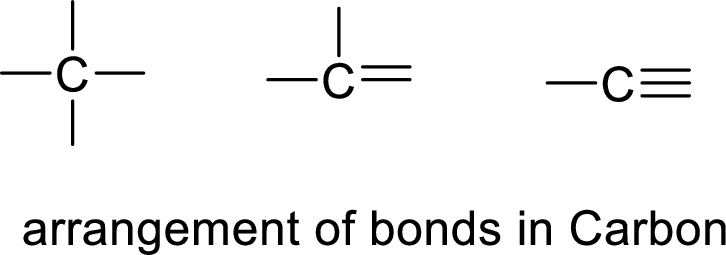
(a)
Interpretation:
The possible skeletons for a six C compound with a five C chain and two double bonds has to be drawn.
Concept Introduction:
The hydrocarbon is said to be a carbon atom bonded with hydrogen. The carbon atom contains four bonds. The bonds may be four single bonds or two single bonds and one double bond or one single bond and one double bond.

If the straight chain is branched, we get one type of hydrocarbon. If double bond is present, it restricts the rotation of the bond and forms cis and trans hydrocarbons.
(b)
Interpretation:
The possible skeletons for a six C compound with a five C chain and one triple bond has to be drawn.
Concept Introduction:
The hydrocarbon is said to be a carbon atom bonded with hydrogen. The carbon atom contains four bonds. The bonds may be four single bonds or two single bonds and one double bond or one single bond and one double bond.

If the straight chain is branched, we get one type of hydrocarbon. If double bond is present, it restricts the rotation of the bond and forms cis and trans hydrocarbons.
(c)
Interpretation:
The possible skeletons for a six C compound with a four C ring and no double bonds has to be drawn.
Concept Introduction:
The hydrocarbon is said to be a carbon atom bonded with hydrogen. The carbon atom contains four bonds. The bonds may be four single bonds or two single bonds and one double bond or one single bond and one double bond.

If the straight chain is branched, we get one type of hydrocarbon. If double bond is present, it restricts the rotation of the bond and forms cis and trans hydrocarbons.
Want to see the full answer?
Check out a sample textbook solution
Chapter 15 Solutions
CHEMISTRY:MOLEC NAT PRINT COMPANION
- Can I please get help with this?arrow_forwardUse the Henderson-Hasselbalch equation to calculate pH of a buffer containing 0.050M benzoic acidand 0.150M sodium benzoate. The Ka of benzoic acid is 6.5 x 10-5arrow_forwardA. Draw the structure of each of the following alcohols. Then draw and name the product you would expect to produce by the oxidation of each. a. 4-Methyl-2-heptanol b. 3,4-Dimethyl-1-pentanol c. 4-Ethyl-2-heptanol d. 5,7-Dichloro-3-heptanolarrow_forward
- What is the pH of a 1.0 L buffer made with 0.300 mol of HF (Ka = 6.8 × 10⁻⁴) and 0.200 mol of NaF to which 0.160 mol of NaOH were added?arrow_forwardCan I please get help with this.arrow_forwardDetermine if the following salt is neutral, acidic or basic. If acidic or basic, write the appropriate equilibrium equation for the acid or base that exists when the salt is dissolved in aqueous solution. If neutral, simply write only NR. Be sure to include the proper phases for all species within the reaction. N₂H₅ClO₄arrow_forward
 ChemistryChemistryISBN:9781305957404Author:Steven S. Zumdahl, Susan A. Zumdahl, Donald J. DeCostePublisher:Cengage Learning
ChemistryChemistryISBN:9781305957404Author:Steven S. Zumdahl, Susan A. Zumdahl, Donald J. DeCostePublisher:Cengage Learning ChemistryChemistryISBN:9781259911156Author:Raymond Chang Dr., Jason Overby ProfessorPublisher:McGraw-Hill Education
ChemistryChemistryISBN:9781259911156Author:Raymond Chang Dr., Jason Overby ProfessorPublisher:McGraw-Hill Education Principles of Instrumental AnalysisChemistryISBN:9781305577213Author:Douglas A. Skoog, F. James Holler, Stanley R. CrouchPublisher:Cengage Learning
Principles of Instrumental AnalysisChemistryISBN:9781305577213Author:Douglas A. Skoog, F. James Holler, Stanley R. CrouchPublisher:Cengage Learning Organic ChemistryChemistryISBN:9780078021558Author:Janice Gorzynski Smith Dr.Publisher:McGraw-Hill Education
Organic ChemistryChemistryISBN:9780078021558Author:Janice Gorzynski Smith Dr.Publisher:McGraw-Hill Education Chemistry: Principles and ReactionsChemistryISBN:9781305079373Author:William L. Masterton, Cecile N. HurleyPublisher:Cengage Learning
Chemistry: Principles and ReactionsChemistryISBN:9781305079373Author:William L. Masterton, Cecile N. HurleyPublisher:Cengage Learning Elementary Principles of Chemical Processes, Bind...ChemistryISBN:9781118431221Author:Richard M. Felder, Ronald W. Rousseau, Lisa G. BullardPublisher:WILEY
Elementary Principles of Chemical Processes, Bind...ChemistryISBN:9781118431221Author:Richard M. Felder, Ronald W. Rousseau, Lisa G. BullardPublisher:WILEY





